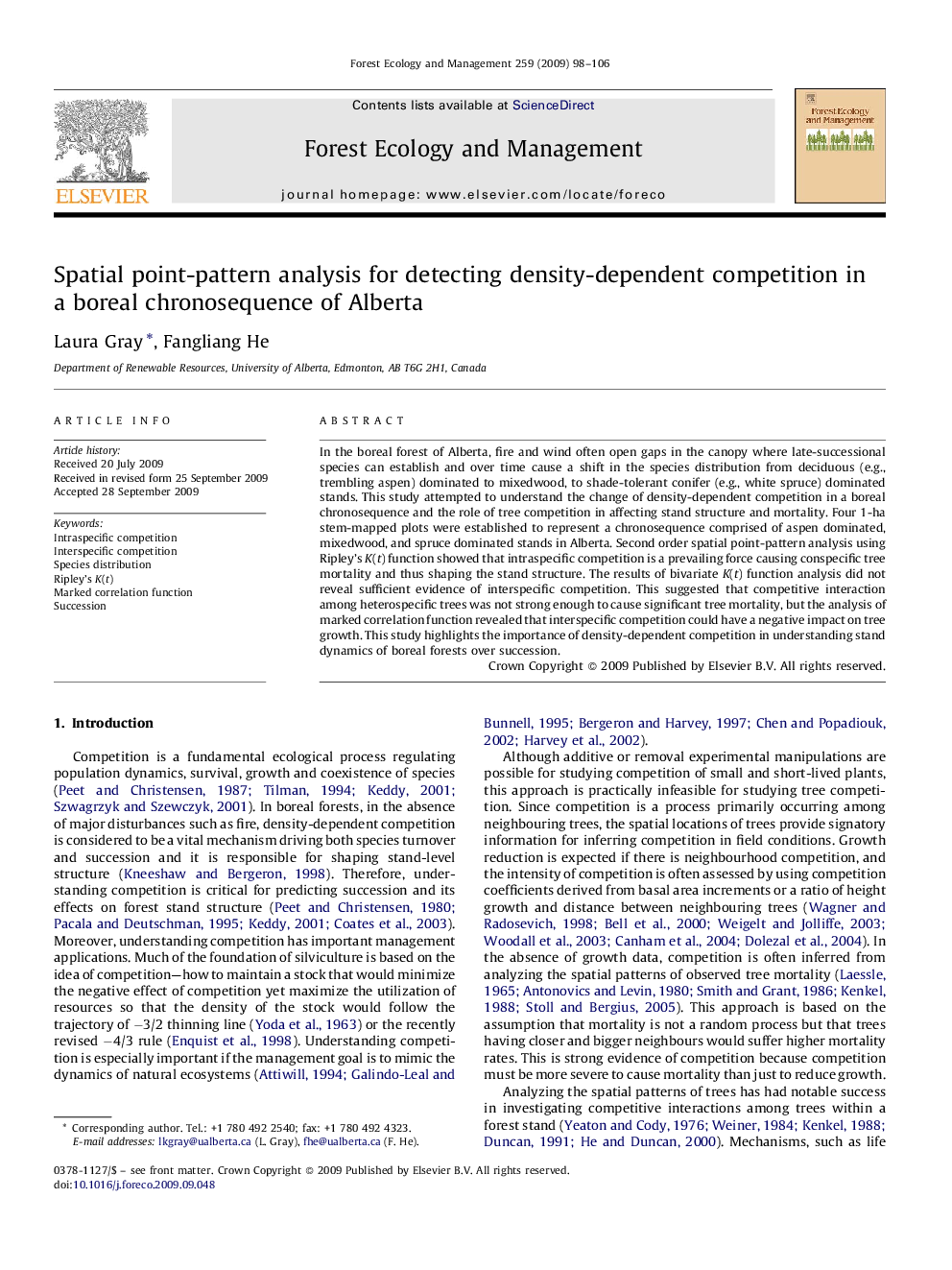| Article ID | Journal | Published Year | Pages | File Type |
|---|---|---|---|---|
| 88638 | Forest Ecology and Management | 2009 | 9 Pages |
In the boreal forest of Alberta, fire and wind often open gaps in the canopy where late-successional species can establish and over time cause a shift in the species distribution from deciduous (e.g., trembling aspen) dominated to mixedwood, to shade-tolerant conifer (e.g., white spruce) dominated stands. This study attempted to understand the change of density-dependent competition in a boreal chronosequence and the role of tree competition in affecting stand structure and mortality. Four 1-ha stem-mapped plots were established to represent a chronosequence comprised of aspen dominated, mixedwood, and spruce dominated stands in Alberta. Second order spatial point-pattern analysis using Ripley's K(t) function showed that intraspecific competition is a prevailing force causing conspecific tree mortality and thus shaping the stand structure. The results of bivariate K(t) function analysis did not reveal sufficient evidence of interspecific competition. This suggested that competitive interaction among heterospecific trees was not strong enough to cause significant tree mortality, but the analysis of marked correlation function revealed that interspecific competition could have a negative impact on tree growth. This study highlights the importance of density-dependent competition in understanding stand dynamics of boreal forests over succession.
